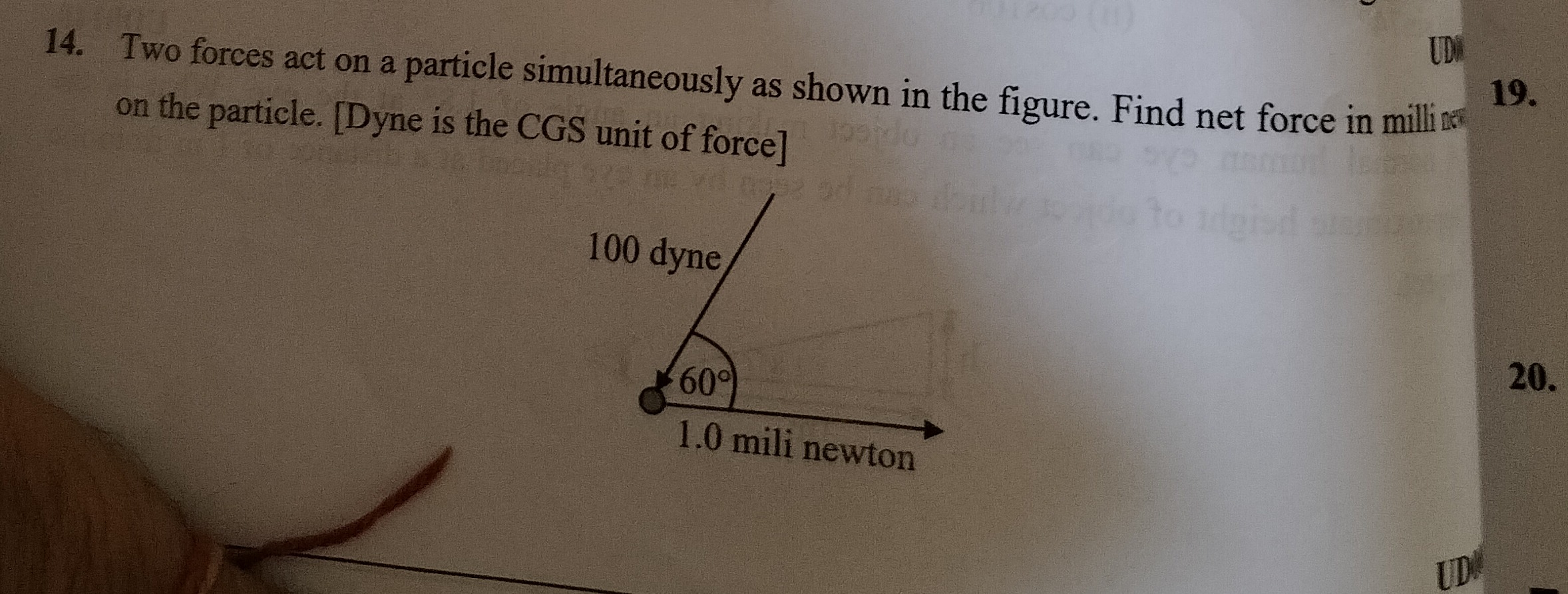Question
Question: Two forces act on a particle simultaneously as shown in the figure. Find net force in milli new on t...
Two forces act on a particle simultaneously as shown in the figure. Find net force in milli new on the particle. [Dyne is the CGS unit of force]

sqrt(3)
Solution
The two forces acting on the particle are F1=100 dyne and F2=1.0 milli newton. The angle between the forces is θ=60∘.
First, we convert the force F1 from dyne to milli newton. The relationship between dyne and newton is 1 newton=105 dyne. So, 1 dyne=10−5 newton. F1=100 dyne=100×10−5 newton=10−3 newton. The unit milli newton is 1 milli newton=10−3 newton. Therefore, F1=10−3 newton=1 milli newton. The second force is given as F2=1.0 milli newton. So, we have two forces of equal magnitude, F1=1 mN and F2=1 mN, acting at an angle of θ=60∘.
To find the net force (resultant force), we use the parallelogram law of vector addition. The magnitude of the resultant force R of two forces F1 and F2 acting at an angle θ is given by: R=F12+F22+2F1F2cosθ Substituting the values: R=(1 mN)2+(1 mN)2+2(1 mN)(1 mN)cos(60∘) R=12+12+2(1)(1)cos(60∘) mN We know that cos(60∘)=21. R=1+1+2(1)(1)(21) mN R=1+1+1 mN R=3 milli newton.
The net force on the particle is 3 milli newton.
